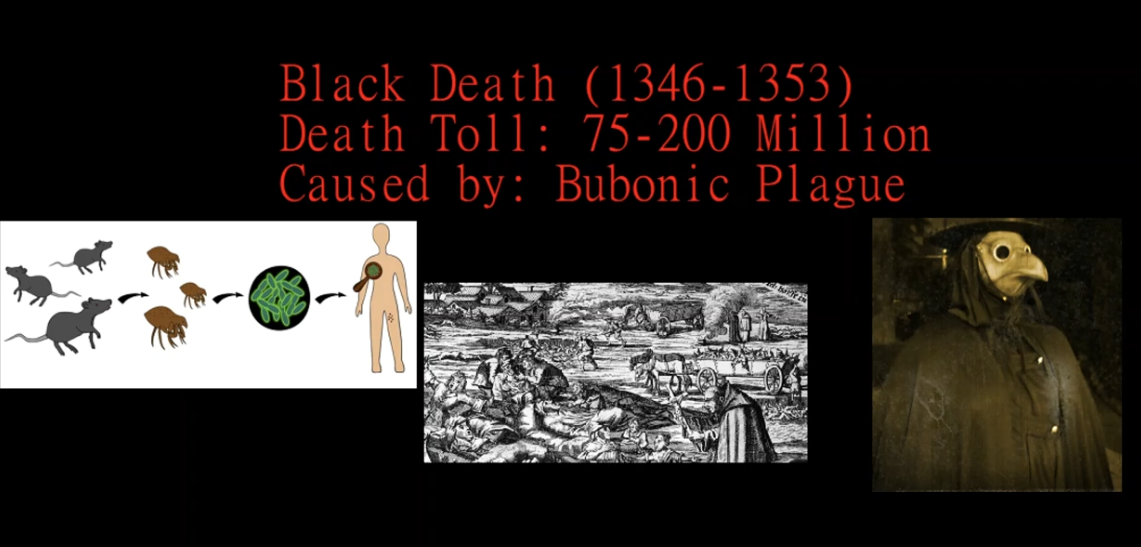
Black Death began in England during the middle ages and spread throughout Eurasia. It was caused by Bubonic Plague, which is a severe recurring bacteria that is spread from rats to fleas, and then to humans. The lack of antibiotics helped the plague spread faster. It was labeled "black" because the infection would leave blistering black bumps on the body signaling infection prior to severe illness and death. This pandemic was highly deadly and contagious, killing nearly 200 million people. It maybe was the world's worst human pandemic of all time, since the devastation caused by the plague only took about 5 years.
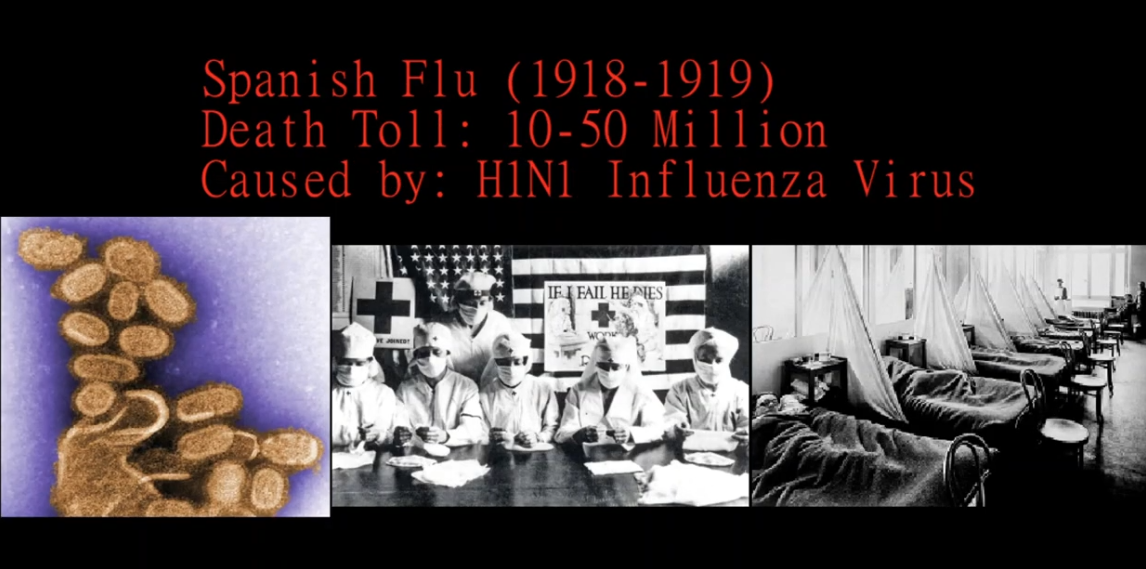
Spanish Flu began during World War I from an unknown source, although it is rumored to start in Kansas either on a farm or military barracks. This large-scale highly infectious flu was caused by a type of H1N1 influenza that spread from birds to pigs, and then to humans. It spread very fast due to the war and tight traveling on ships. Eventually it became a global pandemic, spreading up to 1/3 of the entire population of earth. It was highly deadly, and the bacterial pneumonia as a result of secondary infection was not treatable due to lack of antibiotics. Many younger soldiers died from the disease. In total, Spanish Flu is nearly on par with the Black Death pandemic as one of the world's worst, as it killed up to 50 million people in only a couple of years.
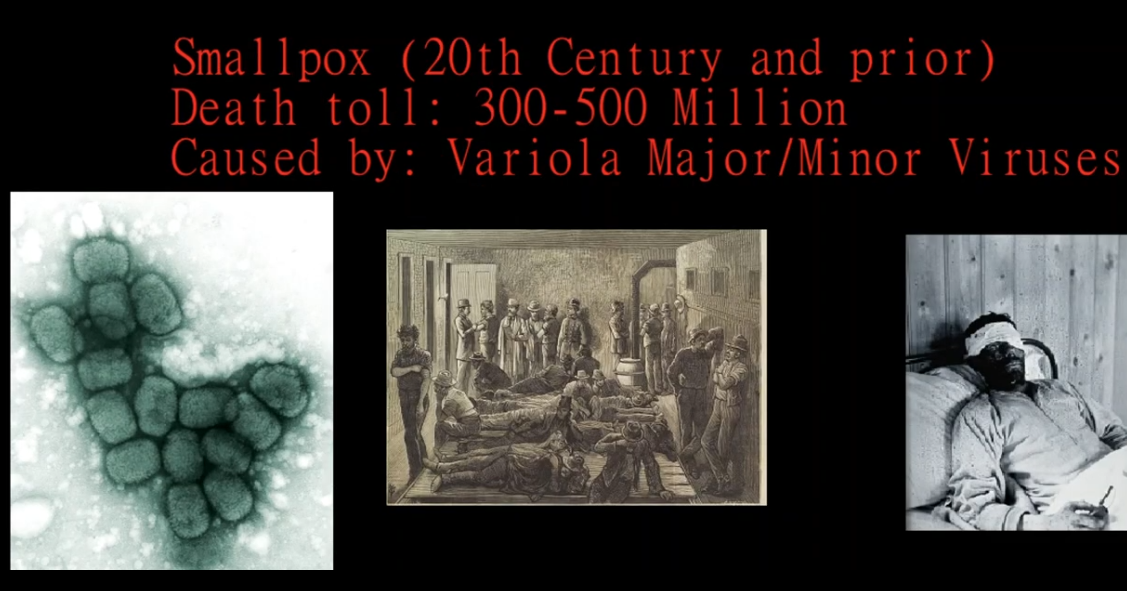
Smallpox was a series of epidemics throughout time caused by the Variola virus. It killed several hundred million over time, which peaked during the 20th century. In addition to causing death, it also caused nasty painful blisters on the body which was unsightly and horrific on the skin in more ways than one. Variola virus was eventually wiped out by vaccines, which stopped smallpox indefinitely.
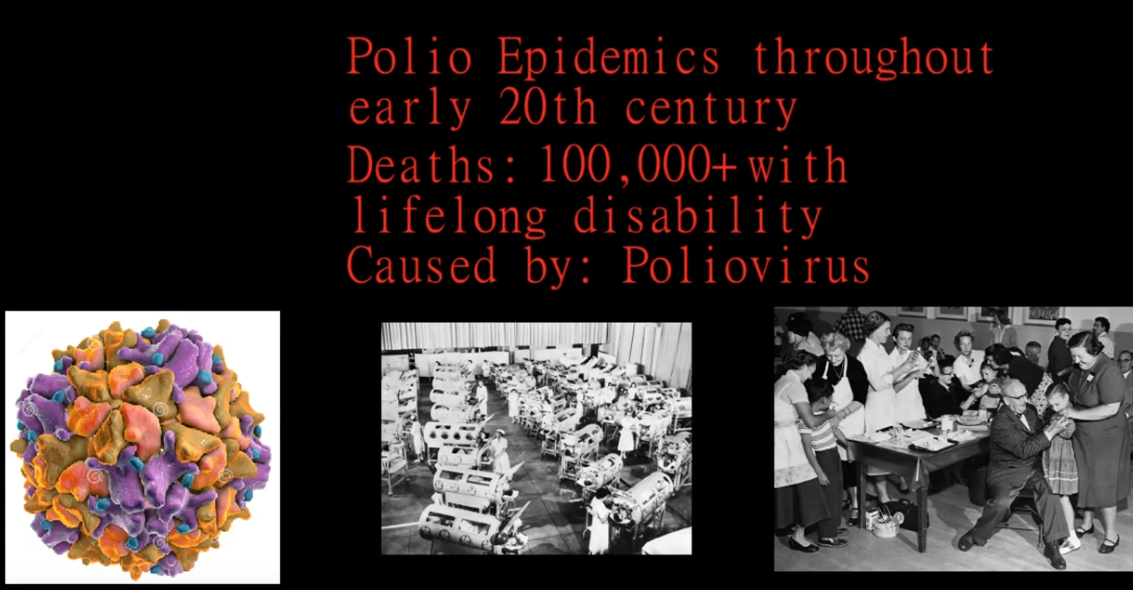
Polio is caused by poliovirus (makes sense!) It's not the deadliest virus but is one of the scariest, as infection can cause devastating lifetime disabilities. Polio still exists today, but after the frightening epidemics of the past the virus has largely been wiped out by vaccines.
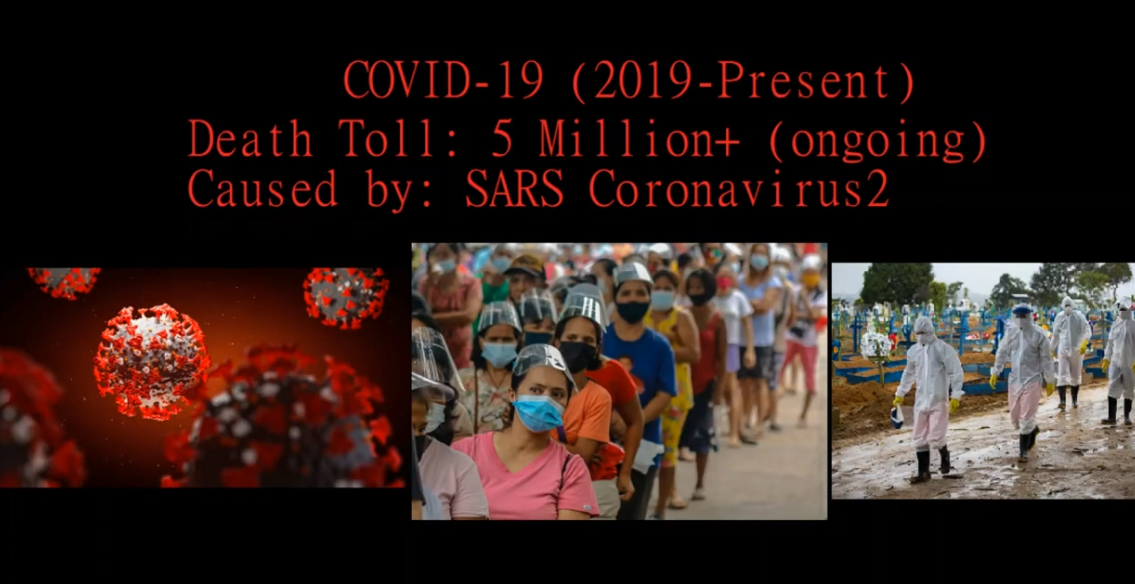
COVID-19 is the current pandemic we are living in today. It began spreading in late 2019 in sometime between September-November of that year in Wuhan, China and the virus epidemic spreading went public in the news late December, 2019. It is caused by the SARS Coronavirus2, which is similar in many ways to the original SARS Coronavirus outbreak in 2002-2003, and MERS outbreaks from 2012-2021. Unlike SARS and MERS though, COVID-19 is extremely contagious, reaching nearly every man, woman and child who comes in contact with another person. It spreads quicker than a cold, and is six times more deadly than a flu. Symptoms of COVID-19 are similar to a flu, except the virus progresses to the airways at a faster speed, which quickens the chance of dying if viral pneumonia is caused. It is a unique virus, as infection and symptoms are 100% viral - there are no secondary infections. Severe COVID-19 causes loss of oxygen, cytokine storm, organ failure, and death. Anyone can be infected with COVID-19 and the more immunocompromised people are at higher risk of severe infection. A vaccine is now available for COVID-19 but the pandemic continues to rage on for a variety of reasons. Millions have already died from COVID-19.